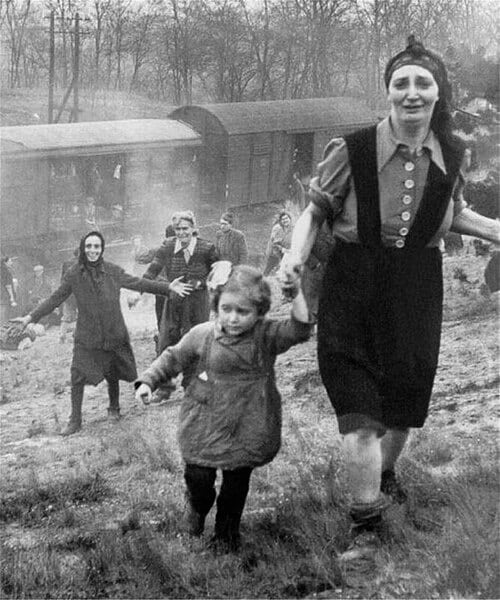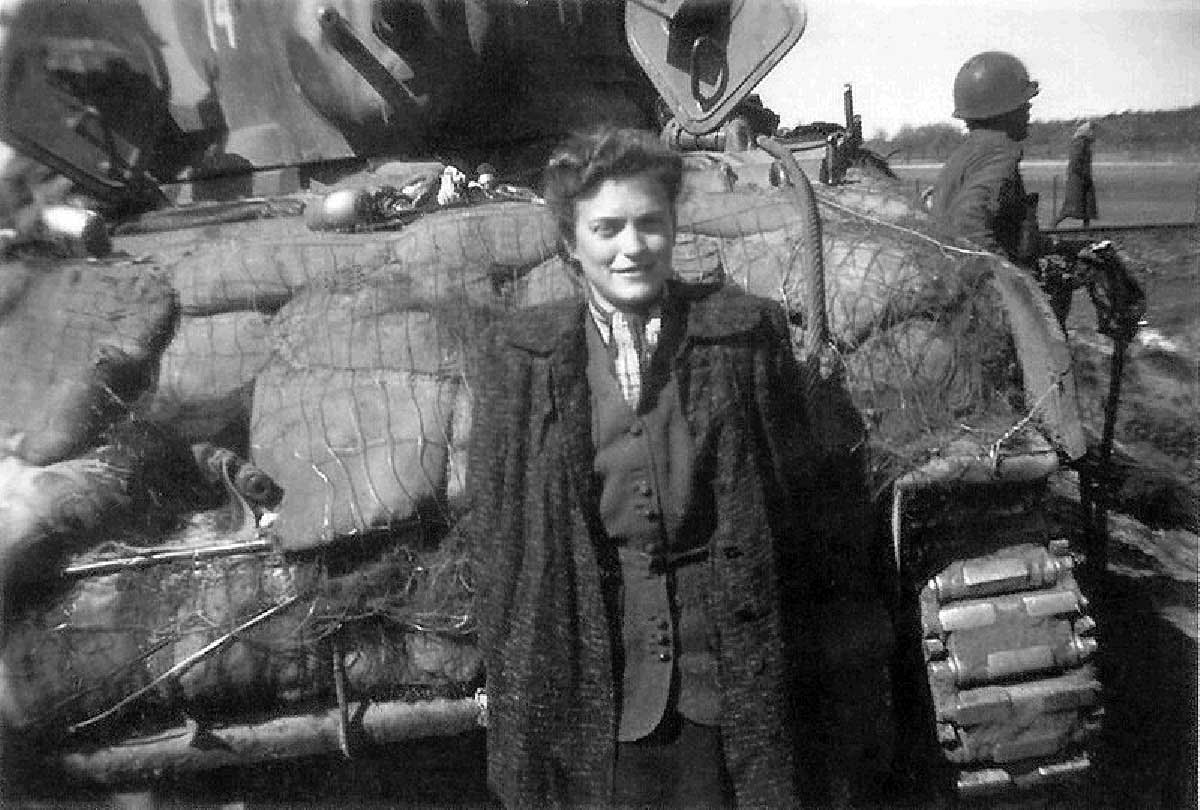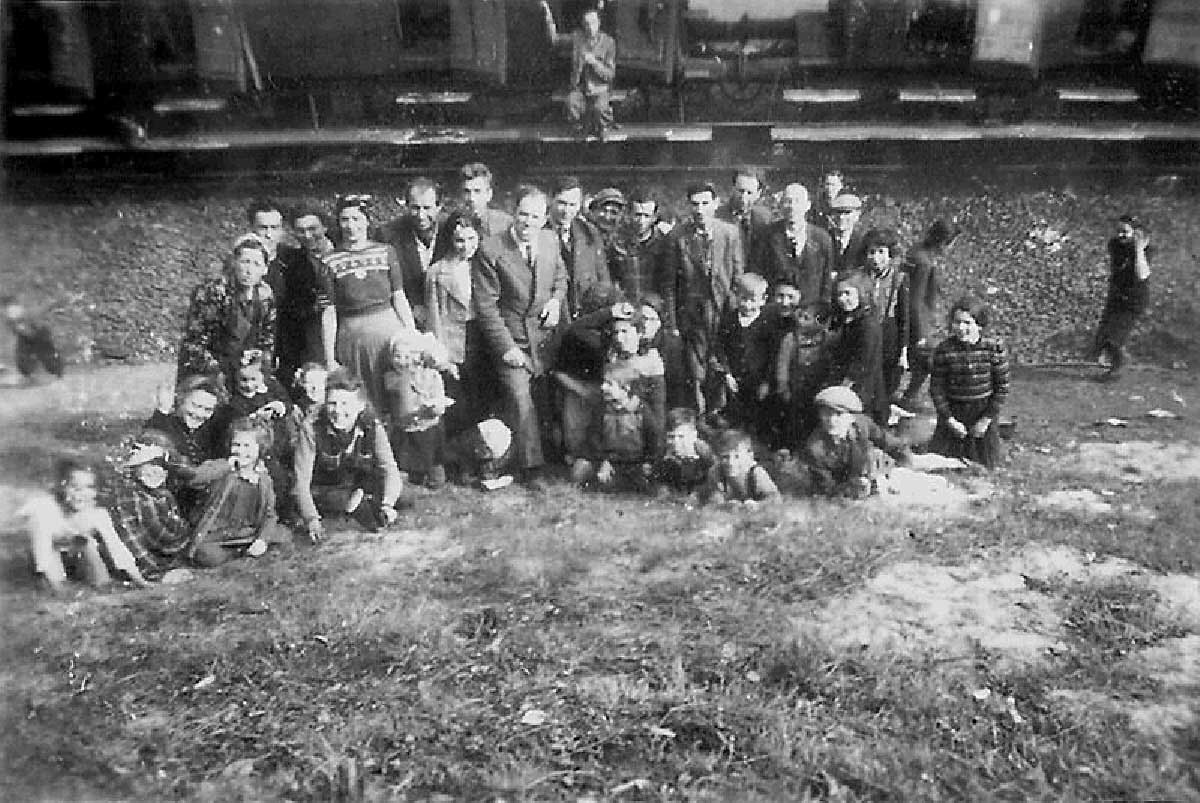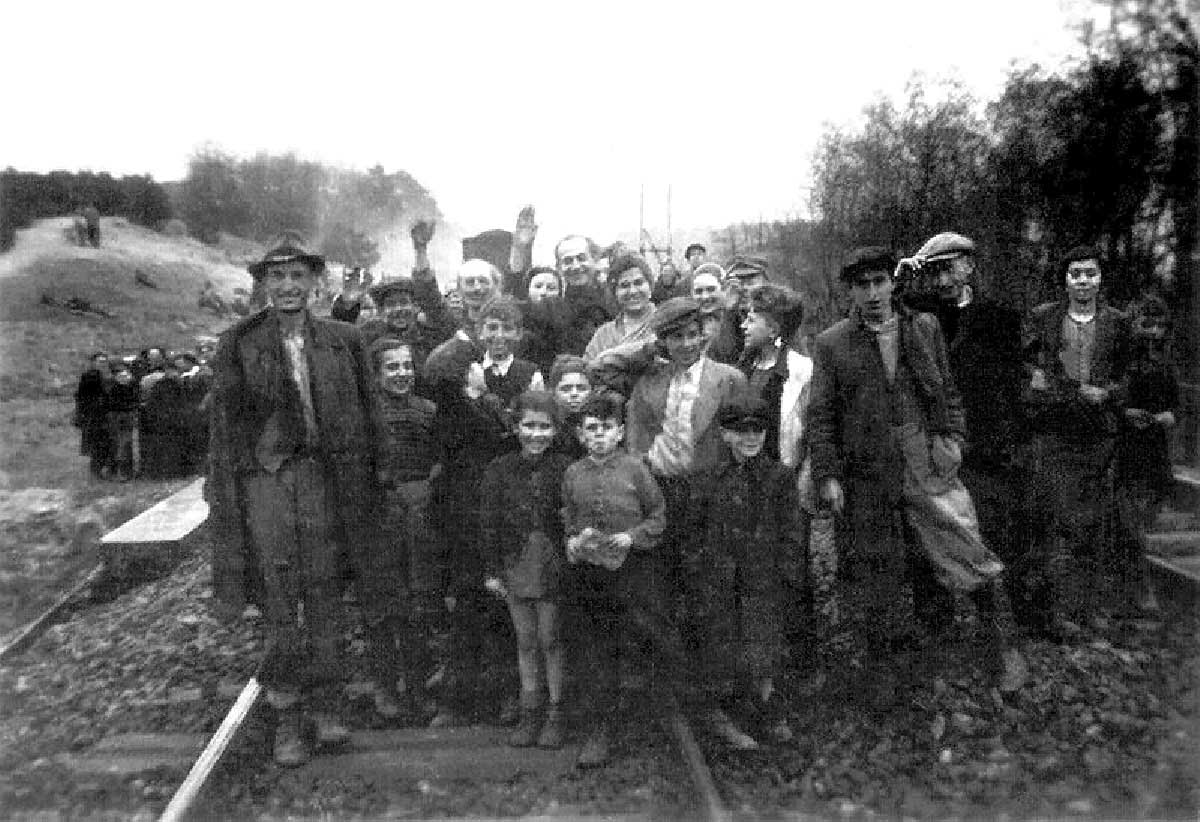From Darkness To Light: Jewish Prisoners Liberated From Death Train On April 13, 1945
During World War II, countless photos documented historical events, serving as vital witnesses to the era. Among the most renowned is an image depicting Jewish prisoners liberated from a death train.
Taken on April 13, 1945, near Farsleben, Germany, it depicts the moment when members of the 743rd Tank Battalion liberated prisoners who were being transported by train from the Bergen-Belsen concentration camp near Farsleben, Germany. The image captures the relief and liberation experienced by the prisoners as they were rescued by Allied forces.
Prisons on “death marches”

As WWII came to an end, efforts were made to move prisoners out of concentration camps before the Allies got there. From Bergen-Belsen, three trains left on April 10, 1945, headed for Theresienstadt. One train only made it to Farsleben, near Magdeburg, where American troops saved the prisoners on April 13, 1945. It is estimated that around 2,500 prisoners were on this fateful train when it left Bergen-Belsen on April 10.
Many Jewish prisoners were from Poland, Russia, and other Eastern countries. Their homes were obliterated, families torn apart, and there was a looming threat of falling under Soviet control, sparking widespread fear about what lay ahead.
As the war neared its conclusion and Germany’s military force was collapsing, Allied forces advanced toward Nazi concentration camps. In a desperate bid to evade capture, the Germans hastily relocated prisoners from camps near the front lines. These prisoners were transported by train and forced to march on foot to camps within Germany, a grueling journey that became known as “death marches.”
Fateful meeting

The fateful day was Friday. In the vicinity of Magdeburg, a few miles northwest, there existed a railroad siding nestled in a wooded ravine, not too far from the Elbe River. Major Clarence L. Benjamin in a jeep leading a small task force of two light tanks on a routine job of patrolling. As they traversed the area, they stumbled upon a group of approximately 200 shabby-looking civilians gathered by the roadside. The men of the 743rd Tank Battalion and the 119th Regiment, who discovered this train, could not believe what they were seeing. The magnitude and urgency of the situation they found themselves in at that very moment were beyond their comprehension.
Upon catching sight of Americans, they began laughing in joy-if it could be called laughing. It was an outpouring of pure, near-hysterical relief. The mere presence of the American uniforms caused a tremendous commotion within this peculiar camp, and a multitude of individuals eagerly flocked toward Major Clarence L. Benjamin’s jeep and the two accompanying light tanks.
As the Major found some who were able to speak English, he knew the whole story. This had been and was a horror train. This train, which had departed from the Bergen-Belsen death camp just a few days prior, contained about 2,500 Jews. As they conversed, the prisoners shared the depths of their suffering and the unimaginable challenges they faced during their journey.
The harrowing conditions endured by Jewish prisoners

Wayne Robinson, Move out Verify: the Combat Story of the 743rd Tank Battalion (Germany, no publisher, 1945), wrote:
“This had been – and was – a horror train. In these freight cars had been shipped 2500 people, jam-packed in like sardines, and they were people that had two things in common, one with the other: They were prisoners of the German State and they were Jews.
These 2,500 wretched people, starved, beaten, ill, some dying, were political prisoners who had until a few days before been held at concentration camp near Hanover.”
Frank W. Towers of the 30th Infantry Division wrote in an article of 2008:
“Men, women and children, were all loaded into a few available railway cars, some passenger and some freight, but mostly the typical antiquated freight cars, termed as “40 and 8” a WWI terminology. This signified that these cars would accommodate 40 men or 8 horses.
They were crammed into all available space and the freight cars were packed with about 60-70 of the Jewish Holocaust victims, with standing room only for most of them, so that they were packed in like sardines….
Some of these prisoners had dismounted from the passenger cars and were milling about near the train and relaxing, as best they could, under the watchful eyes of their Nazi guards. Those in the freight cars were still locked in the cars when discovered, but shortly they were released.”
Freedom at Last: Liberation by Allied Forces

Without hesitation, the men of the 743rd Tank Battalion and the 119th Regiment immediately unlocked all of the freight cars to liberate the weary captives. While many enjoyed their first taste of freedom, others were met with a mix of emotions. They first hesitated because their Nazi guards had advised them “if and when they ever became prisoners of the Americans, they would be executed immediately.” They were unsure of what awaited them under the hands of these savage Americans.

